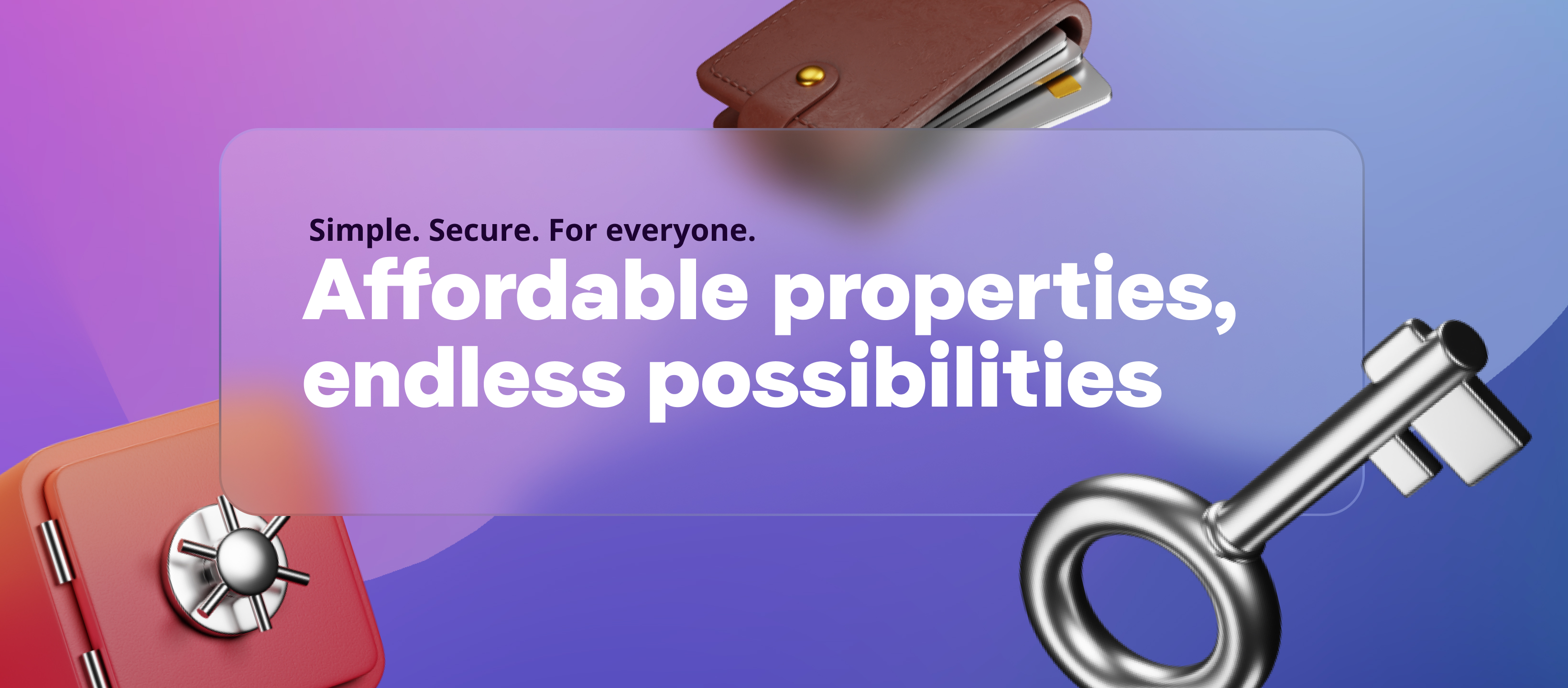9 Key metrics to understand before investing in real estate
October 28, 2025
4 minutes read


Adrien VANDENBOSSCHE
Co-founder | President
🔎 Introduction
Investing in real estate is appealing. Property is reassuring, it embodies tangible value and long-term stability. But before jumping in, you need to know how to read between the lines. Behind every listing and every advertised return lie key indicators that tell another story, one about risk, real performance, and time.
Understanding these indicators means moving from being a saver to becoming an informed investor. They allow you to compare properties, assess their solidity, and measure their profitability beyond appearances.
Net yield, cash flow, occupancy rate, IRR… These concepts might seem technical, but once you grasp them, they become your best allies for making sound decisions.
Here are the 10 key indicators to understand before investing in real estate, so you know what your money is really doing, and why some opportunities are worth more than others.
💰Understanding real profitability
Before focusing on a property’s location or future appreciation, it’s essential to understand what it actually earns. Profitability isn’t just about headline numbers, it’s the balance between income, expenses, and time. Here are the four fundamental indicators to evaluate the real performance of an investment.
1. Gross Yield
Gross yield is the first figure every investor looks at. It measures the relationship between the income generated by the property and its purchase price.
Formula: (Annual rent / Purchase price) × 100
This indicator gives a first impression of profitability, but it’s only an estimate. It doesn’t account for fees, taxes, or vacancy periods. It’s a good starting point, but never the full picture.
2. Net Yield
Net yield refines the analysis. It includes all real costs: management fees, taxes, insurance, maintenance, and co-ownership charges.
Simplified formula: ((Annual rent – Annual costs) / Purchase price) × 100
This number reflects the property’s true yearly performance. Two investments showing the same gross yield may have very different net returns depending on their cost structure.
⚠️ Note: Every platform, institution, or management company has its own definition of net yield. Some include taxes, others don’t. Some even merge multiple components such as rental yield and potential capital gains into a single indicator. Always verify exactly what is included before comparing two investments.
3. Cash Flow
Cash flow measures the difference between income collected and all expenses related to the investment.
Formula: Rental income – (loan payments + charges + taxes + insurance, etc.)
A positive cash flow means your investment generates money each month after covering all costs. A negative cash flow means you must add money from your own pocket.
It’s a key metric to evaluate the financial sustainability of a project, especially if you’re investing with leverage.
4. IRR (Internal Rate of Return)
The IRR measures the overall profitability of an investment over its entire lifetime. It factors in rental income, resale value, and holding period. Unlike annual yield, IRR reflects performance over time.
Formula: Σ [ CFₜ / (1 + r)ᵗ ] = 0
Where:
CFₜ = cash flow at period t (positive or negative)
r = internal rate of return
t = period (month or year)
n = total investment duration
For example, a property with modest short-term returns, but a strong resale gain may show a high IRR. Conversely, a high short-term yield but brief holding period can result in a lower IRR.
It’s the reference indicator for comparing multiple investments with different durations or risk profiles.
📊 Evaluating a property’s potential
Once profitability is calculated, the next step is to assess the property’s potential. A strong yield today doesn’t guarantee tomorrow’s performance. Market conditions, location, and the surrounding economic environment heavily influence both value and stability.
5. Occupancy Rate
The occupancy rate measures the percentage of time a property is rented out.
Formula: (Number of rented days / Total days) × 100
A high occupancy rate reflects solid demand and effective management. A low one may signal pricing, positioning, or location issues.
6. Location and Rental Demand
Location remains one of the strongest performance drivers. A dynamic area with good infrastructure, job opportunities, and sustained rental demand provides long-term stability.
Key indicators to monitor:
- Population growth
- Employment rate
- Rent evolution
- Vacancy rate
“Location, location, location” remains universally true, it’s what sustains value over time.
7. Capital Gain Potential
Rental yield represents short-term performance, while capital gain measures appreciation over time.
Formula: ((Resale price – Purchase price) / Purchase price) × 100
Capital gains depend on various factors: neighborhood development, property quality, urban projects, and infrastructure improvements. The best investments combine solid rental yield with long-term appreciation potential.
⚖️ Managing risk and liquidity
A good investment can’t be judged solely by its yield. Understanding risk, liquidity, and financial structure is just as important. These factors determine your ability to hold over time, absorb setbacks, and exit when needed.
8. Debt Ratio / Leverage Effect
Debt can be a powerful performance booster — if used wisely. Leverage means using borrowed funds to increase investment capacity and amplify returns.
Formula: Leverage = Asset return / Financing cost
When the property’s return exceeds the cost of borrowing, leverage works in your favor. But if the opposite occurs, losses multiply as well. The key is to find the right balance between expected return and repayment capacity.
9. Liquidity Risk
Liquidity risk refers to how difficult it is to sell an asset quickly at a fair price. In real estate, this risk is usually higher than in other asset classes because selling takes time and depends on several factors: market conditions, property appeal, administrative delays, and buyers’ financing.
A low-liquidity asset can be problematic if you need to recover your funds quickly — you may have to sell below value just to find a buyer.
Liquidity mainly depends on:
- Asset type: Smaller properties (like studios or parking spaces) tend to sell faster than large buildings or commercial spaces.
- Market demand: Dynamic areas attract more buyers and shorten sale timelines.
- Economic context: Interest rates, lending conditions, and investor confidence all affect how quickly a property can be sold.
🔗 Ready to give it a try? Start investing in tokenized real estate from just €10 with Shelters!